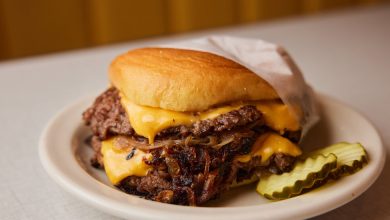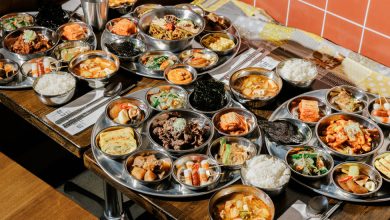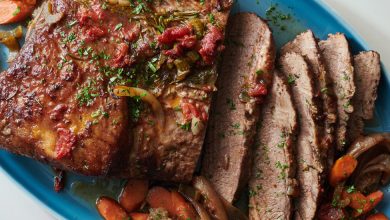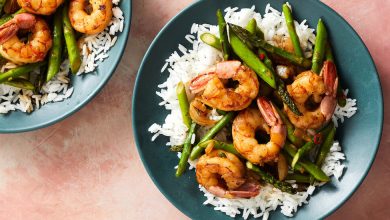We Shot a Moose, Class. There Will Be a Quiz.

NIKISKI, Alaska — Before the sun rose on Nov. 11, 10 students from Nikiski Middle & High School had gathered with their teacher, Jesse Bjorkman, at a gas-station parking lot here in this small community on the Kenai Peninsula — to gear up for a moose hunt.
Dispersed among five vehicles, the group drove about 10 miles to the Nikiski Escape Route, a gravel road connecting Nikiski to the city of Kenai. Inching slowly down the snowy road, the students peered out each side of the cars, scanning the edge of the spruce forests in search of moose.
Within five minutes, they had spotted one, but moved on after seeing a calf nearby. Ten minutes later, the students sighted another moose, but left after realizing it was on tribal land. Mr. Bjorkman reminded the group that “even in a hunt, if we don’t get an animal, it’s still a success.” But within 45 minutes, around 8:50 a.m., the group found a third moose, lounging in a snow heap under a spruce tree.
When his middle school students gave him the OK, Mr. Bjorkman set up his rifle and fired one shot. It was a lethal blow to the roughly 950-pound cow moose. The students gasped at the sound of the gunshot, then giggled with excitement. The moose jumped and sprinted a few hundred feet deeper into the woods before falling down in a clearing.
It was the first time moose hunting for Rex Wittmer, 12. He said finding the animal, shooting it and tracking the kill made his heart race.
“Being a valuable part of society is learning how to do stuff people did before you — keep the tradition going,” he said. “Hunting shouldn’t die off. It’s been part of our culture for many, many years. I feel like coming out here was a good opportunity to keep that tradition alive.”
Rex and the other students from Nikiski are part of their school’s outdoor-explorations class, a course dedicated to teaching an expanded version of the Alaska Department of Fish and Game’s hunter education program. They study basic hunting skills and protocols, wildlife ecology and habitat, and outdoor survival and safety — including Alaska-specific risks like drowning and avalanches. Mr. Bjorkman said students in the program, who choose whether they want to participate in the moose hunt, learn firsthand about where their food comes from.
After the moose fell, the students stayed behind as Mr. Bjorkman walked slowly toward the animal. As soon as he determined the moose was dead, the teacher guided the students toward the kill, quizzing them on what to look for when tracking an animal.
The students — at first timid around the carcass — began to move closer, petting the moose and examining its ears, its long gray tongue and its horselike face. At first, the students watched as Mr. Bjorkman took his knife and narrated every move he made, but eventually they put on latex gloves and helped skin the animal.
As the students helped pull back the hide, steam wafted off the surface of the inner flesh as the fascia was exposed to freezing temperatures. Some years, Mr. Bjorkman teaches his students how to tan the hide; this year, it was left in the forest for other animals to use in their nests.
After the skin was removed, the students helped cut off the limbs, which were placed into canvas bags and hauled out of the woods on sleds to a truck on the roadside. Five adult volunteers had offered their pickup trucks, garage space and strength to help the children take apart the animal and eventually butcher it.
Some students were more comfortable around the carcass than others, who yelled, “Eww!” or “Aww!” during the more gruesome parts of the dissection. But when Mr. Bjorkman reached his arm deep into the body cavity to pull out the still-hot heart — considered to be exceptional meat — the students quietly passed the bloody muscle around to one another to feel before it was bagged up.
Given Alaska’s vast distances and rugged topography, Mr. Bjorkman said it can be easier as a hunter to “leave the kids at home and not teach them.” But he created the class moose hunt “to be as much about the kids as possible,” and to give them an opportunity to be part of the process, he said.
Showing students how to be good stewards of the earth and responsible users of wildlife resources is “one of the most valuable lessons we can teach young kids today,” he said.
“If we can get kids out enjoying nature and enjoying the world around them in a meaningful way, it’s our hope that they’re going to choose to do those outdoor activities rather than getting into trouble,” Mr. Bjorkman said.
***
The outdoor-explorations class began in 2013, when a schoolwide schedule change gave teachers the chance to create more elective courses for students. Mr. Bjorkman saw an opportunity to devise a class incorporating what he’d learned a year earlier at a Safari Club International outdoor leadership school near Jackson Hole, Wyo.
At that school, educators around the country are taught how they can incorporate outdoor skills into the curriculum. While there, Mr. Bjorkman heard of schools in Colorado, Florida and other parts of the country where students were hunting, camping, practicing archery and learning other outdoor skills — but “maybe not to the degree that we’re doing things here in Alaska, with the educational moose hunt, where folks are collecting an animal and turning it into food from field to freezer,” he said.
Dalana Barnett said it was important for her son, Zachary Barnett, to have this experience. “He was really excited — it’s all I’ve heard about for the last month,” Ms. Barnett said the morning of the hunt. “If they’re old enough to be in middle school, then they’re old enough to go hunting.”
Koleen Wittmer, Rex’s mother, said the moose hunt was an “amazing opportunity,” especially for families without the resources to try hunting on their own.
“You’d be surprised how many kids who have never gone hunting or fishing live here,” she said. “I think the exposure is so cool, because there are kids here who’ve never been able to do this in their lifetime. It’s so cool because they’re going with someone safe who is teaching them.”
Mr. Bjorkman, 37, said the class has been a positive experience for students, particularly for those who haven’t taken well to other academic or extracurricular programs.
“It’s the happiest I’ve ever seen this one student, who was cutting up a moose and making food for her family,” he said. “It’s not for everyone, but it’s definitely for a lot of people that might not have a connection to something else.”
About two-thirds of the class went on the hunt; the rest had other commitments, and no students or parents raised objections, Mr. Bjorkman said. All those who went had eaten moose before, and while warming up by the fire, many snacked on moose meat sticks their parents packed for them.
Emma Hornung, 12, said she wanted to join the hunt because she loves moose meat. Her father hunts, and asked her to bring home the choice backstrap cut.
“I think if you were to eat moose and you’d never eaten moose before, it would be very difficult for most people to tell the difference between moose and beef,” Mr. Bjorkman said of the lean, mild game meat.
While most people may not think of moose as food, for many Alaskans and Canadians, it has been a crucial nutrition source “because of all the richness that it has,” he said. Moose are an important traditional food for many Alaska Native, Native American and First Nations people.
***
About 7,000 of the estimated 175,000 moose in Alaska are harvested annually, producing about three million pounds of meat, according to the Department of Fish and Game. Moose are especially numerous along rivers in south-central and interior Alaska. Like many big-game species in Alaska, moose are protected and regulated, but they are plentiful enough that the state permits hunting — and autumn moose hunts are a yearly ritual for thousands of Alaskans.
But moose were not always common on the Kenai Peninsula. When miners settled in the area in the 1870s, they altered the landscape with a series of wildfires that destroyed the habitat of the area’s plentiful caribou population but brought a rapid increase in the moose population. By 1910, the area had become famous for its thousands of enormous moose.
After a couple of hours of skinning, cutting and bagging the moose, the students and volunteers brought the severed limbs to the home of Dylan Hooper — a Nikiski Middle & High School teacher who teaches the outdoor-education class with Mr. Bjorkman — to be hung for two days, to tenderize the meat.
When it came time to butcher, the students were walked through all the things they needed to know: how to sharpen a knife, how to safely hold and glide it across the flesh, where to cut, and how to trim the fat and tendons off the meat.
Some of the meat scraps were ground into dog food, and the leg bones were donated to a woman who will use them to make moose stock for Alaska Native elders at the nearby senior center.
The students split about 500 pounds of roasts, steaks, sausage, bratwursts and hamburger. While processing the meat, the students talked about all of the ways their families would cook their freezers full of meat this winter.
Kameron Bird, 13, was looking forward to the months of eating meat. As he put it, “Moose steak, if you’ve never tried it, you got to.”
Follow NYT Food on Twitter and NYT Cooking on Instagram, Facebook, YouTube and Pinterest. Get regular updates from NYT Cooking, with recipe suggestions, cooking tips and shopping advice.




